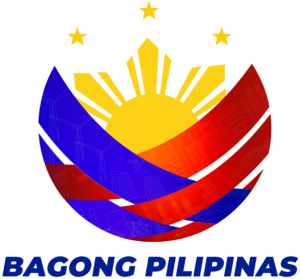Ismael Magallanes Jr.
Museum Researcher II
“My fellow citizens: there is one thought I want you always to bear in mind. And that is: that you are Filipinos. That the Philippines is your country, and the only country God has given you. That you must keep it for yourselves, for your children, and for your children’s children, until the world is no more. You must live for it, and die for it, if necessary.”
Manuel Luis Quezon
Message to My People, 1920s.
August is a month of great historical significance in the Philippines, particularly when it comes to honoring Manuel Luis Quezon, one of the nation’s most revered political figures. Two important dates are observed during this month: his death anniversary on 1 August and his birth anniversary on 19 August. Quezon’s legacy is deeply impactful—he is celebrated as the “Ama ng Wikang Pambansa” (Father of the National Language) for his pivotal role in establishing a national language, which was crucial in promoting a unified national identity. Additionally, his strong advocacy for women’s rights, highlighted by the signing of the women’s suffrage law in 1937, and his dedication to social justice reflect his unwavering commitment to the welfare and rights of all Filipinos.
Manuel Luis Quezon had an illustrious political career, marked by a series of significant roles: he served as Governor of Tayabas in 1906, Representative and Majority Floor Leader of the Philippine Assembly from 1907 to 1909, Resident Commissioner from 1909 to 1916, Senate President from 1916 to 1935, and ultimately became the first President of the Philippine Commonwealth, serving from 1935 to 1944. His leadership was especially vital in the relentless pursuit of Philippine independence from the United States. Even before his rise as a prominent statesman, Quezon demonstrated his commitment to the nation’s freedom during the early years of American occupation by joining the Philippine Revolutionary Army under President Emilio Aguinaldo.
When the Philippine-American War erupted on 4 February 1899, Manuel Luis Quezon was in his hometown of Baler and made the decisive choice to join the conflict, driven by his belief that the Americans had betrayed the Filipinos. He traveled to Pantabangan, where he reported to Colonel Calixto Villacorta, a valiant soldier who had previously fought against the Spaniards. Quezon was initially given the rank of second lieutenant and soon promoted to first lieutenant after successfully capturing a group of bandits responsible for a heinous crime in Aliaga.
Quezon was later assigned to the general staff of President Emilio Aguinaldo when the seat of government moved from Malolos to Cabanatuan. In this role, Quezon primarily handled office duties. However, Aguinaldo later ordered him to Baguio to replace the commanding officer of the garrison. After completing this mission, Quezon requested to be sent to the frontlines. Aguinaldo granted his request, assigning him to Porac, Pampanga, under the command of General Tomas Mascardo. Quezon later joined Colonel Leysan’s staff and was eventually promoted to the rank of Major when he assumed command of the defense of Porac.
With the fall of Pampanga and under increasing pressure from Major Franklin Bell, General Tomas Mascardo, who had been appointed by President Emilio Aguinaldo as the commanding general of Filipino forces in Central Luzon, retreated to the mountains of Bataan. General Mascardo then ordered Manuel Luis Quezon to take command of operations in the area stretching from Balanga to Mariveles.
In 1901, news reached General Mascardo that Aguinaldo had been captured in Palanan. To confirm the accuracy of this information, Mascardo instructed Quezon to surrender. In April 1901, Quezon complied and surrendered to Lieutenant Lawrence Miller, the American officer in command at Mariveles. Quezon was then taken to Malacañang Palace, where he was presented to General Arthur MacArthur, who was holding Aguinaldo in custody. Quezon informed Aguinaldo of the mission given to him by General Mascardo. Initially wary of Quezon’s intentions, Aguinaldo eventually told him that General Mascardo had to make his own decision about surrendering, as he no longer had the authority to give orders after taking an oath of allegiance to the United States. After completing his mission, Quezon stayed at the house of Dr. Alejandro Albert in Manila but was subsequently arrested and imprisoned for six months.
After his imprisonment, Manuel Luis Quezon resumed his law studies and passed the bar exam in 1903, finishing fourth in his class. As a lawyer, he was appointed as a public prosecutor first in Mindoro and later in his home province of Tayabas. Recognizing that political power could be a vital instrument in achieving the nation’s independence, Quezon decided to shift his focus to politics. He understood that influencing political structures was essential for advancing the country’s quest for self-governance. This insight launched him into a prominent political career, where he became a leading advocate for Philippine independence. On 4 July 1946, the Philippines achieved full independence from the United States, fulfilling Quezon’s lifelong dream. However, he did not live to see this historic moment, having passed away on 1 August 1944, two years before independence, due to tuberculosis.

MAJOR MANUEL QUEZON, 1901
NHCP Museo ni Manuel Quezon
REFERENCES:
GUERRERO, M.C. Kasaysayan: The Story of the Filipino People Volume Six: Under Stripes and Stars. Asia Publishing Company Limited, 1998.
GRIPALDO, R.M. Manuel L. Quezon: A Life Led with Achievement. The Technician 7, Mindanao State University, 1998.
QUEZON, M.L. The Good Fight: The Autobiography of Manuel L. Quezon.

